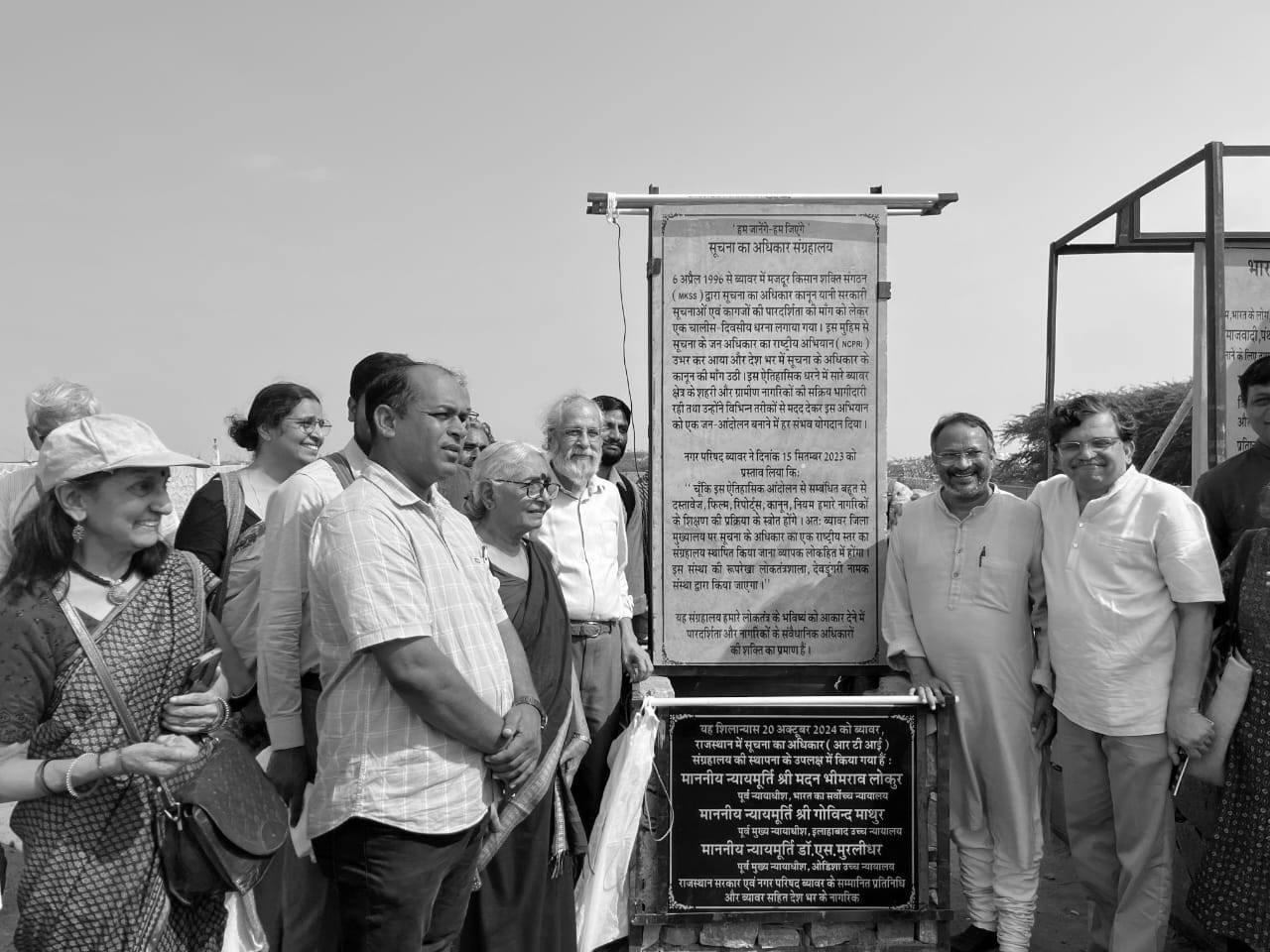
RTI Museum – Beawar, Rajasthan
“A people’s archive of transparency — remembering how ordinary citizens made the right to ask a public habit.”

“A people’s archive of transparency — remembering how ordinary citizens made the right to ask a public habit.”
The RTI Museum in Beawar stands where a quiet revolution took root. In the mid-1990s, villagers, workers, and MKSS volunteers began asking for a simple thing: to see the records of public spending in their own communities. Muster rolls, bills, and vouchers—documents that once hid in dusty cupboards—became the basis for a new public conversation. By reading those records aloud in village squares, people learned to check facts, compare numbers, and ask fair questions without fear. Beawar became a classroom for democratic method: evidence first, discussion next, decision in the open. The museum preserves that atmosphere through posters, minutes of jan sunwais, and photographs of night-long meetings. It reminds visitors that transparency is not a technical trick but a social habit, practiced patiently and together. The story of Beawar shows how the right to ask did not descend from the capital; it flowed upward from everyday courage.
Long before the Right to Information became national law in 2005, its practices were improvised in places like Devdungri and Beawar. Workers requested wage records to verify whether they had been paid for each day of labor. When discrepancies surfaced, communities held jan sunwais—open hearings where officials, contractors, and citizens faced the same evidence. The goal was not humiliation but correction: pay dues, fix accounts, and restore trust. The museum traces this path from handwritten petitions and hand-painted banners to statewide campaigns and, finally, the drafting of a law. It honors countless unnamed contributors who carried files, translated jargon, and made the process inclusive for those who could not read. In telling this story, the museum shows that RTI is neither elite nor urban. It is a people’s law sculpted by practice, tested in village forums, and refined by collective patience over many years.
Exhibits are intentionally tactile and modest, inviting visitors to slow down and look closely. Enlarged muster rolls reveal how each name, day, and wage add up—or fail to. Vouchers and bills, once opaque, are annotated to show where numbers drifted from reality. Photographs capture the texture of the movement: hand mics, floor meetings, lantern-lit audits. Audio clips from hearings let you hear how questions were framed with respect and clarity. A timeline maps Beawar’s local experiments to the broader national campaign. Labels are written in accessible language, with translations so that students, workers, and officials read them together. There are sample RTI applications to study and adapt, and corners where visitors can practice drafting their own requests. The overall design resists spectacle. It favors careful looking, plain words, and the gentle confidence that grows when people handle evidence themselves.
More than a gallery, the museum functions like a workshop. Volunteers explain how to identify the correct public authority, narrow a query, and ask for certified copies or inspection. Role-play exercises recreate a jan sunwai: someone reads the record, someone asks questions, and everyone learns to separate rumor from proof. Templates help first-time applicants file requests without legalese. The emphasis is ethical as much as procedural: verify, document, and speak with dignity. Teachers bring classes to demystify bureaucracy; community groups borrow formats for local audits; officials sometimes participate to improve record-keeping and proactive disclosure. This hands-on approach turns RTI from a complaint tool into a craft. Visitors leave not only informed but equipped—with steps they can take, language they can use, and the confidence to ask for information in ways that invite cooperation rather than conflict.
The methods refined in and around Beawar—reading records together, holding open hearings, and treating evidence as a community asset—have influenced public audits across India. Social audit processes in programs like MGNREGA borrow their spirit and design from these early experiments. Journalists, students, and researchers study the museum’s materials to understand how transparency changes incentives, improves service delivery, and restores credibility. Collaborations with universities and civil society groups have helped translate local practice into policy debate and training curricula. Crucially, the museum avoids nostalgia. It insists that RTI is a living right requiring maintenance: building user communities, documenting outcomes, and defending disclosures. In a time of information overload, Beawar’s lesson is precise: not more data, but better access; not louder voices, but clearer questions anchored in publicly verifiable records.